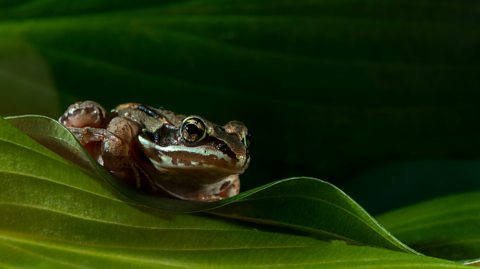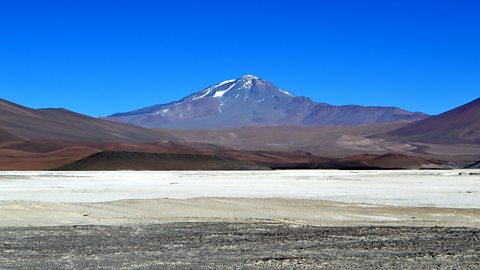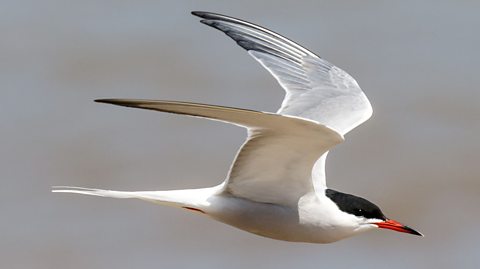A freezing cold morning or a boiling hot summerās day might have you wondering: how do things survive in these conditions?
Animals across the world have to adapt to different living conditions, but some thrive in the most extreme environments, such as the chilly winds of Antarctica or hot springs found on the ocean floor.
“óĻó“«Ć½ Bitesize takes a look at four animals who live in the wildest of environments and just how on earth they do it.

Emperor Penguin
When the temperature drops, you can definitely feel the cold but imagine having to live in conditions as low as ā50Ā°C (-58Ā°F). Thatās what Emperor Penguins do, spending their time on the ice of Antarctica.
Being in such a cold environment means these penguins need to keep warm somehow and they do this by gathering in groups to share the warmth. To make it fair, the penguins take turns being on the outside and inside of the huddle so they all have a chance of warming up. They also have two layers of feathers and a good amount of fat to help them survive the harsh weather.
Standing around 1.2m (3.9ft) tall, Emperor Penguins are the largest of all penguins, so with the chilly weather and their size, these penguins will need a lot of food to keep them energised. They tend to eat silverfish and some squid, consuming around 2-5kg (4.4-11lb) of food every day.
Male Emperor Penguins protect their eggs by covering them with feathered skin known as a brood pouch. While they do this, they will not eat for up to four months. The male will survive simply on the body fat they built up over summer, losing half of their body weight during this time.
The female then heads to the sea to feed, coming back in time for when the baby Emperor Penguin is ready to enter the world. The female Emperor Penguin will then regurgitate the food they caught at sea for the hatched chicks - yummy.

Wood frog
Sometimes when the cold weather hits, you just have to embrace it, but maybe not as much as the wood frog does. They can be found in North America in forests where temperatures can drop as low as -45Ā°C (-50Ā°F).
Whilst most frogs survive this bitterly cold temperature by hibernating underwater, the wood frog stays on the forest floor. In order to stay alive, the wood frog collects glucose in its tissues. That prevents the cells in the body from freezing, and binds water molecules inside those cells to prevent the frog from dehydrating. Although the outer body freezes and will have ice on it, the inside of the frog is still functioning. For the whole of winter, the frog will not move, breathe or even have a heartbeat.
When the winter floor starts to defrost and spring starts to make an appearance, the wood frog will be ready to get back to business. All it needs to do is thaw from the inside out.

Pompeii worm
What lurks in the deepest depths of the ocean? The Pompeii worm, of course! Biologists discovered the worm in the 1980s and labelled it as one of the most heat-tolerant animals on Earth, surviving temperatures as high as 176Ā°F (80Ā°C).
The Pompeii worm lives at the top of hydrothermal vents, hot springs found on the ocean floor. They move back and forth between the hot water, which is full of nutrients, and the cool water contains oxygen.
Bacteria coats the worms' back. This is to protect them from the extreme heat, without this they would only be able to survive temperatures that reach up to 55Ā°C (131Ā°F). The bacteria is fed by the worm secreting mucus, a way of working known as a symbiotic relationship.

Yellow-rumped leaf-eared mouse
From the bottom of the ocean to the top of the world - well, almost. In 2020, scientists reported on the discovery of the worldās highest-dwelling mammal, the yellow-rumped leaf-eared mouse. When it comes to surviving treacherous heights, this type of mouse beats the likes of the mountain goat and yak.
The mouse was found at 22,110ft (6739m), at the Llullaillaco, one of the highest volcanoes in the World. It is fairly large for a mouse but scientists are unsure what it eats, as there is no vegetation and a lack of oxygen in its habitat, but somehow it does survive. It can also be very cold, with temperatures barely going above freezing and can drop as low as -60Ā°C (-76Ā°F).
Not only does this little mammal take the record for reaching the mighty heights it does, it has also been found at sea level meaning no other animal is known to live at such a wide variation in altitudes.
This article was published in October 2024
Looking for quizzes, amazing stories and fun facts?
Bitesize Topical has it all!

Three animals with an incredible memory
Discover the amazing memory capabilities of squirrels, elephants and dolphins.

Which animal has the longest migratory journey on Earth? Here are five animals that prefer to 'chill' in colder climates.

Laziest earthlings: What natureās most chilled animals can teach us about slow living
From the mammal that sleeps the most to the laziest citizen competition, learn about these chilled out earthlings.
